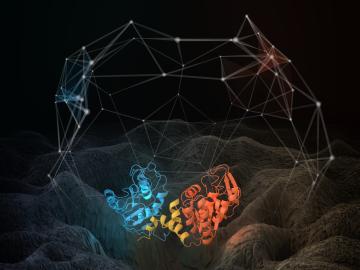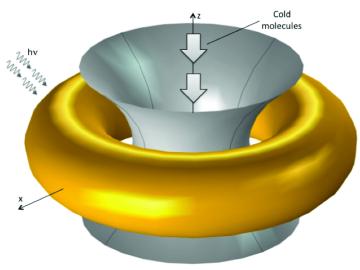
Filter News
Area of Research
- (-) Supercomputing (22)
- Advanced Manufacturing (6)
- Biological Systems (3)
- Biology and Environment (7)
- Building Technologies (2)
- Chemistry and Physics at Interfaces (3)
- Clean Energy (44)
- Computer Science (1)
- Energy Frontier Research Centers (4)
- Functional Materials for Energy (3)
- Fusion and Fission (1)
- Geographic Information Science and Technology (1)
- Isotope Development and Production (1)
- Isotopes (1)
- Materials (46)
- Materials for Computing (3)
- Materials Synthesis from Atoms to Systems (2)
- Materials Under Extremes (3)
- National Security (3)
- Neutron Science (16)
- Nuclear Science and Technology (8)
- Quantum Condensed Matter (1)
- Reactor Technology (1)
- Transportation Systems (2)
News Topics
- 3-D Printing/Advanced Manufacturing (2)
- Artificial Intelligence (1)
- Bioenergy (3)
- Biology (1)
- Biomedical (2)
- Chemical Sciences (1)
- Climate Change (1)
- Computer Science (7)
- Coronavirus (3)
- Decarbonization (1)
- Energy Storage (1)
- Environment (3)
- Grid (1)
- High-Performance Computing (1)
- Isotopes (1)
- Machine Learning (1)
- Materials (2)
- Materials Science (3)
- Microscopy (2)
- Molten Salt (1)
- Nanotechnology (3)
- National Security (1)
- Neutron Science (5)
- Nuclear Energy (1)
- Physics (1)
- Quantum Science (3)
- Summit (5)
- Sustainable Energy (3)
- Transportation (2)
Media Contacts

A team of researchers has performed the first room-temperature X-ray measurements on the SARS-CoV-2 main protease — the enzyme that enables the virus to reproduce.

For the second year in a row, a team from the Department of Energy’s Oak Ridge and Los Alamos national laboratories led a demonstration hosted by EPB, a community-based utility and telecommunications company serving Chattanooga, Tennessee.

OAK RIDGE, Tenn., May 5, 2020 — By 2050, the United States will likely be exposed to a larger number of extreme climate events, including more frequent heat waves, longer droughts and more intense floods, which can lead to greater risks for human health, ecosystem stability and regional economies.

OAK RIDGE, Tenn., Feb. 19, 2020 — The U.S. Department of Energy’s Oak Ridge National Laboratory and the Tennessee Valley Authority have signed a memorandum of understanding to evaluate a new generation of flexible, cost-effective advanced nuclear reactors.

An international team of researchers has discovered the hydrogen atoms in a metal hydride material are much more tightly spaced than had been predicted for decades — a feature that could possibly facilitate superconductivity at or near room temperature and pressure.


The U.S. Department of Energy’s Office of Science announced 56 projects aimed at accelerating discovery and innovation to address some of the world’s most challenging scientific questions. The projects will share 5.8 billion core hours on America’s two most powerful s...





